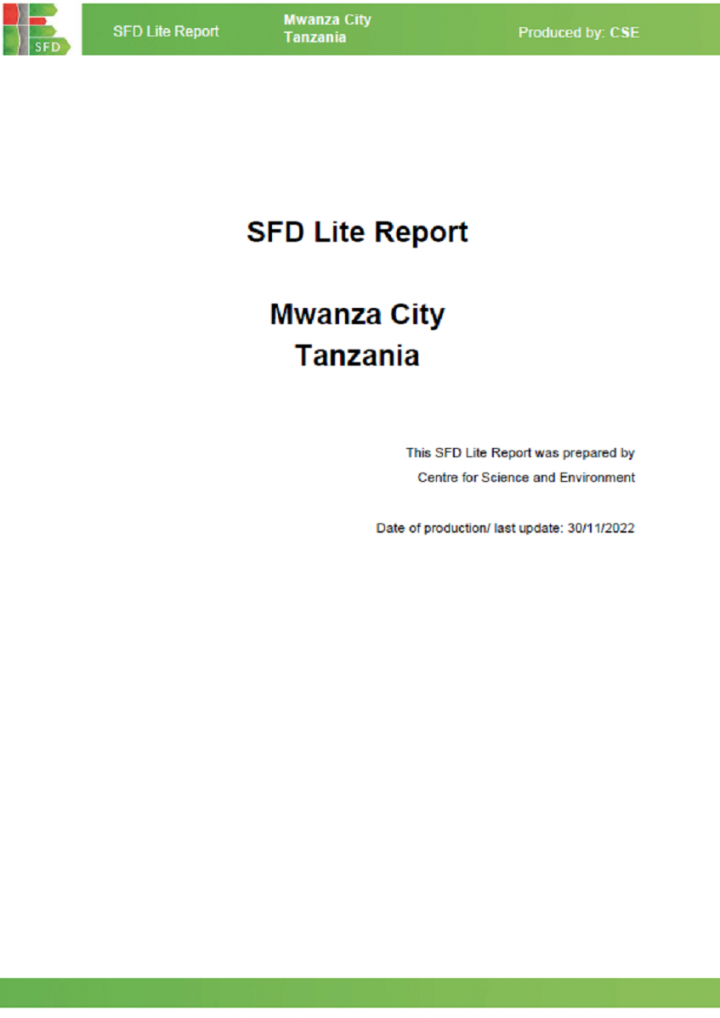
Author(s): CSE
Published in: 2023
Pages: 16
Publisher: CSE
SFD (Lite) Report - Mwanza, Tanzania
Mwanza City, popularly known as âThe Rock Cityâ, is situated in the north-west of Tanzania on the southern shores of the Lake Victoria. Mwanza city is the second largest city in Tanzania and is the capital of Mwanza Region. The city covers an area of 256 sq.km, divided into land area covering 173 sq.km, equivalent to 67.6 % of total area and 83.0 sq.km, equivalent to 32.4 % of water area, mostly dominated by Lake Victoria. The population of Mwanza city in the current SFD is taken as 1,544,000 persons that reside in 259,000 households with an average household size of 6 persons . The cityâs population density was noted to be 945 persons per sq.km in 2002. It increased to 1,402 persons per sq.km in 2012. Currently, the population of the city has seen drastic change where there are approximately 8,000 persons per sq.km.
Most sanitation systems available in the town are classified as onsite systems (93%). The sewer network only covers 4% of the population. The main types of toilet facilities are fully lined tanks connected to a water body, fully lined tanks with no outlet or overflow and lined tanks with impermeable walls and open bottom connected to a water body.
The outcome of the SFD graphic shows that overall 19% of excreta flow is classified as âSafely Managedâ in Mwanza city whereas 81% of excreta flow is âUnsafely managed (Figure 16). The unsafely managed excreta originate from wastewater not delivered to treatment (2%) and wastewater not treated (2%); FS not contained â not emptied (30%), FS not delivered to treatment (30%); FS not treated (16%) and open defecation (2%). The safely managed excreta come from wastewater treated (2%), FS treated (16%) and FS from contained types of containments which is not emptied but remains in the containments (1%).
Keywords


